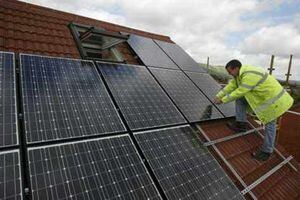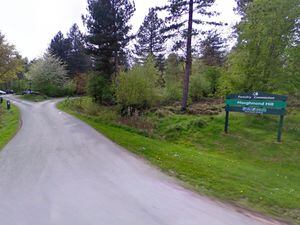Farming Talk: Farmers flock to renewable energy projects
New research conducted by the NFU and NatWest has revealed that 30 per cent of farmers across England and Wales will be involved in some form of renewable energy production by the end of the summer.

New research conducted by the NFU and NatWest has revealed that 30 per cent of farmers across England and Wales will be involved in some form of renewable energy production by the end of the summer.
Around one in five will be producing clean electricity, one in six will have installed solar PV and a further one in eight will be using or generating renewable energy. The findings suggest agriculture will make a significant contribution to the UK target of producing 15 per cent of our energy from renewable sources by 2020, as set by the EU Renewable Energy Directive.
The survey also revealed one of the major concerns farmers have over renewable energy is planning permission. More than half of those surveyed felt that gaining planning permission was the biggest barrier.
But planning need not be a hurdle. Planning authorities are being urged to look favourably on renewable energy projects and the government now exempts small-scale renewable energy generators like solar panels on existing buildings and anaerobic digesters on farming or non-domestic land from planning regulations. The new small scale exemptions came into force on April 6 and are aimed at boosting the rural economy by removing some of the red tape associated with renewable schemes.
For larger scale renewable projects, full planning permission is still normally required. As with most new developments, the key is to seek professional advice from the outset to ensure you select the most appropriate energy generator to suit your individual farm and circumstances and that your project fits local policies and guidelines.
Our team at Berrys has been involved with a number of renewable energy projects in the county including anaerobic digesters, solar PV schemes and wind turbines.
When making an application you must explain why you have chosen the particular site and how it meets certain planning policy criteria. The authority will consider the visual and landscape impact, highways and access, traffic movements before and after the development, noise and pollution and you need to have your answers prepared on these types of issues before the council asks. You must also be willing to engage with the community.
While the Feed in Tariffs are falling for solar installations, there are still considerable opportunities for wind power, particularly smaller/medium scale. Planning-wise, small turbines are usually more locally acceptable but larger installations tend to be more cost-effective. Anaerobic digestion is also a growing area and Berrys have had success with a number of large scale anaerobic digestion schemes in Shropshire
In terms of wind power, a farm scale 20kW turbine will cost in the region of £30,000-£80,000 (installed), with a payback of six to ten years depending on site wind speed. Systems from 50-500kW can cost in the region of £150,000-£700,000, with a return on investment of greater than 16 per cent achievable on the right site.
Stephen Locke is a partner at Berrys





